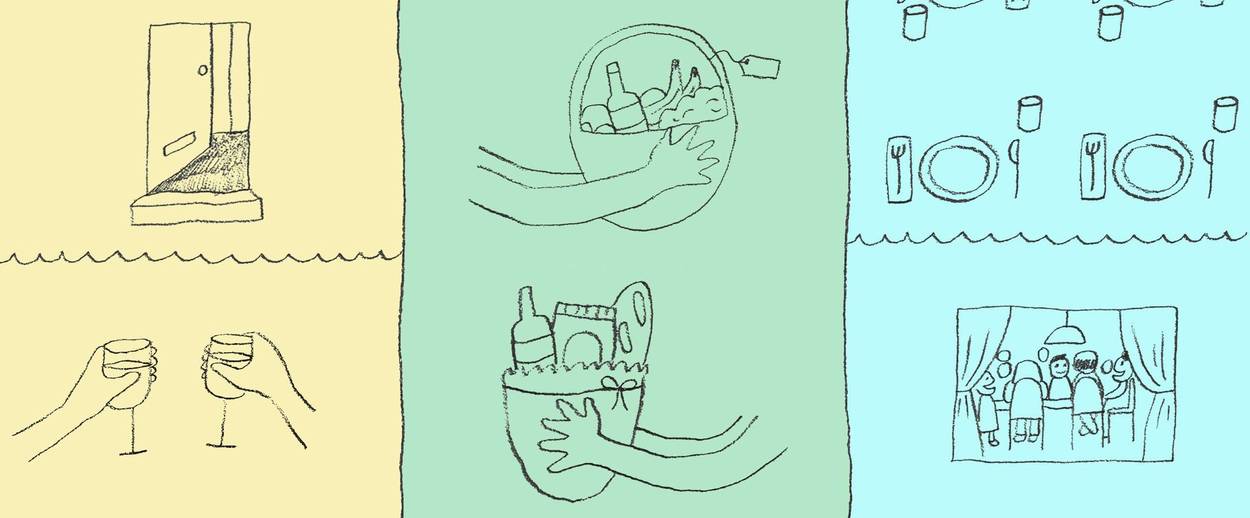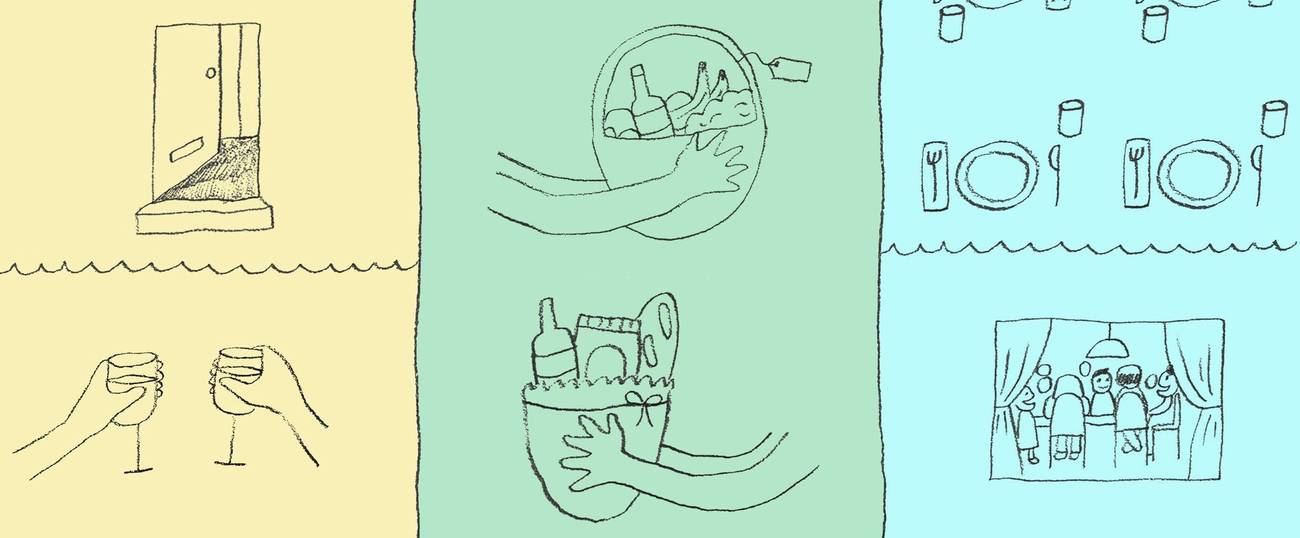The Joy of Purim
What the holiday can teach us about fighting evil in our midst




When you’ve been struggling to overcome evil, Purim feels different.
It isn’t just a silly interlude this year, a chance to be in costume and create cleverly themed mishloach manot—gifts of food. The situation for American Jews right now is far from what we’ve come to consider normal, and it’s affected me on a personal level. It was one thing when the cemetery where my great-grandparents and great-aunt are buried in Philadelphia was desecrated right after the inauguration of the current occupant of the Oval Office. It was quite another to have the bodies of the living murdered in cold blood on the Sabbath in my lovely Pittsburgh neighborhood of Squirrel Hill, a place of harmony and goodwill. Can we feel safe as Jews in America again when there are those in our midst who hate us this much?
Certainly it seems to me that this year I need a blueprint for fighting evil. That blueprint is found in the biblical story of Amalek, Israel’s ancient enemy. On Purim, we can learn from how tradition has mandated that we celebrate the four commandments for the holiday. The lessons of the past don’t seem either distant or frivolous this year. Far from being the “Jewish carnival holiday,” Purim is a holiday whose messages are so serious and profound that tradition holds it is the only one, of all the Jewish holidays, that will endure, even to Messianic times.
I first started thinking about this when I spent Shabbat morning of MLK weekend at Charleston’s Brith Sholom Beth Israel synagogue, with some of my fellow congregants from Pittsburgh’s New Light Congregation. Our intent in going to Charleston—along with members of Rodman Street Missionary Baptist Church—was to meet and worship with the congregation of Mother Emanuel church, because like our congregation in Pittsburgh, they’d also had a white-supremacist gunman invade their worship space. We wanted to learn from their experiences and to march in solidarity with them in the city’s Martin Luther King Jr. Day parade. We were with the Jewish community on Shabbat and my husband, Rabbi Jon Perlman, was asked to speak at the kiddush about the Torah portion of the week, which included the first mention of fighting Amalek in the Torah. He spoke about combating Amalek, and how in several weeks, on Purim, we would be celebrating our victory over the forces of a descendant of Amalek: Haman. The point of the month of Adar and of Purim is a chance to be happy, to increase happiness—exactly what Amalek does not want us to do, he said. Our celebration and joy for all of Adar and especially on Purim would be the ultimate domination of Amalek. I had not been thinking that far ahead, and was impressed that my husband could on the spur of the moment speak so eloquently about such a difficult topic.
A quick look at the first mention of battling Amalek in the Torah (and how the Israelites combated this nemesis in battle) reads like a prospectus on how to fight evil. Moses held his hands up; the Israelites prevailed. When he did not, they could not win the battle. Oddly, at first, when the battle is discussed in future tense, a “staff of God” is mentioned as something Moses will clutch. Yet, when the text of Exodus later recounts in past tense what Moses actually did during the battle, only his hands are specified; he did not make use of the divine staff. What can this omission teach us about how to fight Amalek? Evil is from humans and must be fought by humans. As humans, we can counteract and oppose what other humans have instigated.
We also learn that others supported Moses. He couldn’t do it by himself; Aaron and Hur supported him and made sure his hands stayed where they needed to be. In The Particulars of Rapture, Bible scholar Avivah Zornberg writes: “The role of Moses’ hands is to model for the people the attraction upward that is faith. His hands rise in the age-old position of prayer.” The seeds of how to fight Amalek are in this story of Moses, Aaron, and Hur working together to keep Moses’ hands upraised and the eyes and minds of the people focused properly to be able to win the conflict. Gathered together, they were able to win.
This lesson is evident in the Purim story as well. The verb vayakhel, to gather, appears five times in the Book of Esther. I believe it is expressed so prominently because gathering is a way to combat hate. Why do we gather? To find God and strength in each other. In his book Conquering Fear, Rabbi Harold Kushner writes: “Sociologists studying the religions of primitive societies concluded that the earliest forms of religion evolved not so much to connect people to God as to connect them to other people.” Certainly one of the things that heartened the Jews of Squirrel Hill was that our neighbors wanted to create gatherings. The evening of Oct. 27, high school kids convened a gathering at the neighborhood’s main intersection and hundreds turned out in the rain. A formal gathering on Oct. 28, including religious and political leaders of all affiliations and denominations, also restored the feelings of the public that it would be safe to gather. Jews were seen as a part of the larger community, “These are our friends and neighbors,” was Allegheny County Executive Rich Fitzgerald’s reaction to the event.
The commandment to eat a festive meal as a mandated part of the Purim celebration speaks to this. Jews must gather and be with other Jews to eat—and to drink. This is the time we are allowed to drink till we don’t know the difference between blessed be Mordechai and cursed be Haman, and though opinions differ on just how drunk that is, it is a part of the holiday. Drinking together, we are learning to live in a way that we are not afraid to be in the world, that our usual defenses can at least for this day be put aside. Gathered with others, looking around at the loot that is ours from mishloach manot, knowing that we have given tzedakah to others so that we are all able to celebrate, we can remember and retell the story of defeating Amalek.
This year, in keeping with the theme of combating evil, I am going to try to send mishloach manot to all those who made meals for me the first week or so after the shooting. I don’t even know who to thank, but that is the point. People I don’t even know (as well as many I do know) made food for my family and me after Oct. 27. My family received food and gifts of all kinds from those affiliated with Reform, Reconstructionist, Conservative, Orthodox, and Chabad-Lubavitch synagogues. Every day we came home from a funeral, there was food waiting for us. It made me feel loved and cared for, which is a wonderful antidote to having a place into which you try to invoke holiness on a weekly basis invaded by hate and destroyed by bullets, countless bullets.
One of the four commandments that Jews are supposed to fulfill on Purim is exchanging gifts of food, mishloach manot, based on the Book of Esther, “sending choice portions to one another.” Rabbi Shmuel Herzfeld explains that the point of this practice is to counter Haman’s accusation that the Jews are “dispersed and scattered” (Esther 3:8); to enact unity, we give gifts to each other. All of the commandments around Purim are about forging those bonds between people, creating connections, promoting love. This is a way to fight hate. Hate comes from isolation. It may be hard to reach out and create bonds between people, but that is what Purim is for.
We defy evil by not being intimidated by it. Those in the Purim story were not intimidated: Queen Esther confronted Haman directly, telling Ahasuerus, “This man is the enemy and adversary,” (Esther 7:6) in front of both of them, and earlier unafraid to risk her own life by going before the king (4:17). But first, she fasted for three days and asked the Jews of Persia to come together and to fast (4:16); drawing strength from others enables you not to feel intimidated. This is the reason behind the festive meal, one of the other commandments of the holiday. Gifts of tzedakah—another Purim commandment—maintain that all should be able to celebrate the holiday with dignity.
The last of the four commandments is that we are required to read the story of Purim from the Book of Esther—aloud from a Megillah scroll. Part of the power of the ritual is to have a shared experience, to inscribe our feelings not just in the text, but in the community of those who hear it, taking the story in and making it part of ourselves. It’s like a sacred Rocky Horror Picture Show, but without throwing rice—although we do dress in costume and yell and make noise at certain points in the story, interacting with the story we are hearing.
Purim is the only holiday that our sages tell us will endure into Messianic days, according to Maimonides. The joy of overcoming an enemy is eternal. This year, I am more convinced than ever that it is because of human action and acting properly that it endures; professor Wendy Zierler calls Purim “the holiday of human action.”
All the things we do on Purim counteract the behavior of Amalek. It is a holiday about finding ways to be happy and create bonds between people, for the possibilities of connection and creating love in the world. Marianne Pearl, the widow of slain journalist Daniel Pearl, has said, “Terrorism is a psychological weapon. It stops you from claiming the world as your own. It stops you from relating to other people. It creates fear and hatred. The only way to fight terrorism as a citizen is to deny them those emotions. … The one thing they are not expecting is my happiness. That is true revenge.”
I’ve never been schooled on what to do to help myself, my family, my synagogue community, my friends and extended community, the Jewish community of Pittsburgh, or the larger community, to heal from an act of hate, one that targeted us specifically. What should I do? What can I do? It is comforting to me that there is a blueprint here in Jewish tradition in the holiday of Purim, whose goal is to fight evil and create unity. We can and should take claim to our intent to be happy again, because that is the only way to defeat those who wish our destruction.
Beth Kissileff is the editor of the anthology Reading Genesis (Continuum, 2016) and the author of the novelQuestioning Return (Mandel Vilar Press, 2016). Visit her online at www.bethkissileff.com.